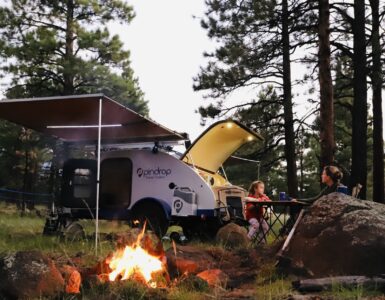A huge, far-reaching, winding hiking trail system has been proposed as leaders from all over the state have begun talks for a new Sun Corridor Trail, spinning from the very southern point of Arizona to Las Vegas, crossing more than 1,000 miles of the state.
The trail begins in the border and trade town of Douglas, and winds north through Tombstone, Tucson, Phoenix, Black Canyon City, Prescott, Jerome, Clarkdale, Cottonwood, Sedona, and Flagstaff. It then hangs a sharp left turn and continues on to Kingman and Bullhead City before ending up in Las Vegas. If you map it out on your globe or Google Maps, that comes out to more than 1,200 miles of hiking. That means you’ll need a lot of hydration packs and Clif bars.
One supportive voice in the trail’s plans is Yavapai County Supervisor Tom Thurman of District 2. Thurman is a co-chair on the executive board of the Sun Corridor Trail.
“We want everyone off their couches and off their phones, and enjoy why we live here in Arizona. We love the wide open spaces here, so let’s enjoy it,” says Thurman.
Thurman, who found himself in a co-chair position not long after attending a meeting about the trail, has joined with other leaders in the state to work out how the trail will actually connect through a trail system this daunting. The trail will link up with existing trails in the respective towns and cities it cuts through, like the Lime Kiln Trail around Sedona and the Jail Trail in Cottonwood. But considering the major gaps in between stops, the Sun Corridor Trail will require some new construction. According to Thurman, this could take anywhere between three and five years to complete.
This is essentially the first step in getting the trail system underway. Leaders along with Thurman will meet in front of more stakeholders over the next couple of months, including a public meeting in Phoenix in August.
For the state, a trail like this could be a big tourism boon, drawing in outdoors enthusiasts from all over the country to hike different parts of it, camping or RVing along the way. With the trail hitting all different parts of the state, it could be a boost for local economies by creating opportunities in lodging, outdoors outfitters, food, fuel, etc.
“If you look at the Pacific Coast Trail, it’s an area where suppliers do very well. We can get that same notoriety,” Thurman said. “This represents a lot of eco-tourism dollars and another way to sustain economies in the areas during recessions, so we’re not so dependent on the construction industry.”
















Add comment